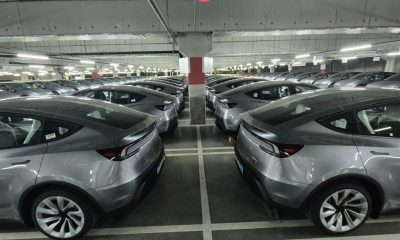News
Tesla rolls out latest Safety Score update—Here’s what’s new
Tesla’s latest Safety Score update drops one highly criticized factor, while adding weight to pieces like speeding, follow distance, and more.
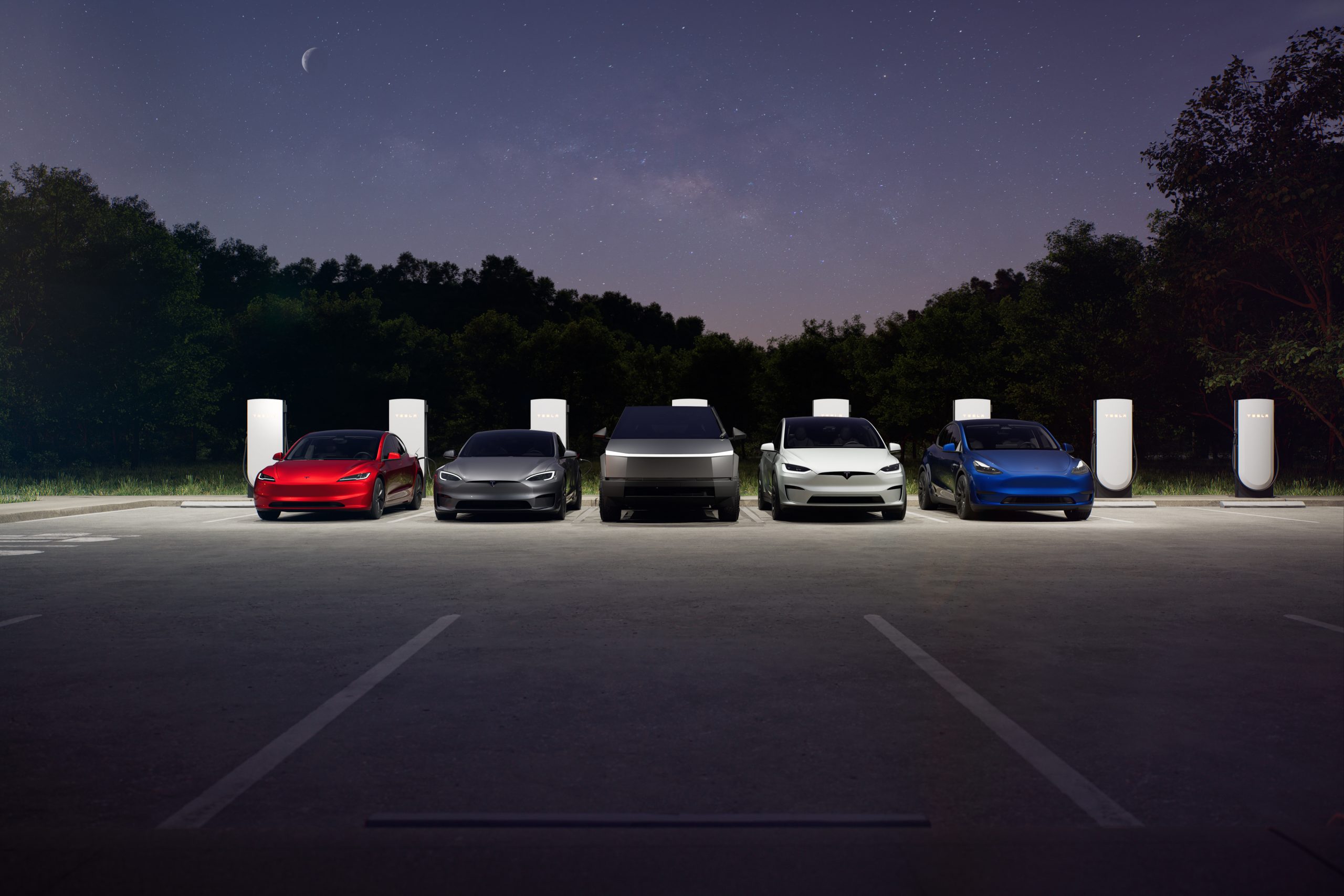
Tesla has officially started rolling out a new version of its insurance program’s Safety Scores beta, improving upon a few different metrics that make up the index.
As detailed on the Tesla Insurance web page, the company has updated its Safety Scores to beta version 2.2 from the previous version 2.1. The update primarily includes improvements to how Excessive Speeding is measured, along with the removal of Forward Collision Warnings (FCW) from the formula.
In addition, Tesla has slightly increased the values of related factors such as Hard Braking and Unsafe Following Time in the v2.2 formula, perhaps in an attempt to help accommodate some of the situations previously covered by the FCW rating.
READ MORE ON TESLA INSURANCE: Tesla launches insurance discount for FSD users in these two states
Tesla’s Safety Scores are used to determine premium rates for buyers of the company’s in-house insurance program, except in California, where privacy laws prohibit the use of real-time driving data to determine premiums. The company also says that its latest formula for Safety Scores were generated using over 22 billion miles of fleet data from its cars, while the company plans to continue improving the formula as more data comes in.
At this time, Tesla Insurance is available in the following 12 states, though Safety Scores aren’t available in California for the aforementioned reason:
- Arizona
- California
- Colorado
- Illinois
- Maryland
- Minnesota
- Nevada
- Ohio
- Oregon
- Texas
- Utah
- Virginia
You can see the factors that make up Tesla’s Insurance Safety Scores below or on its website here, along with the specific formula that makes up a drivers’ 0 to 100 Safety Score.
Hard Braking
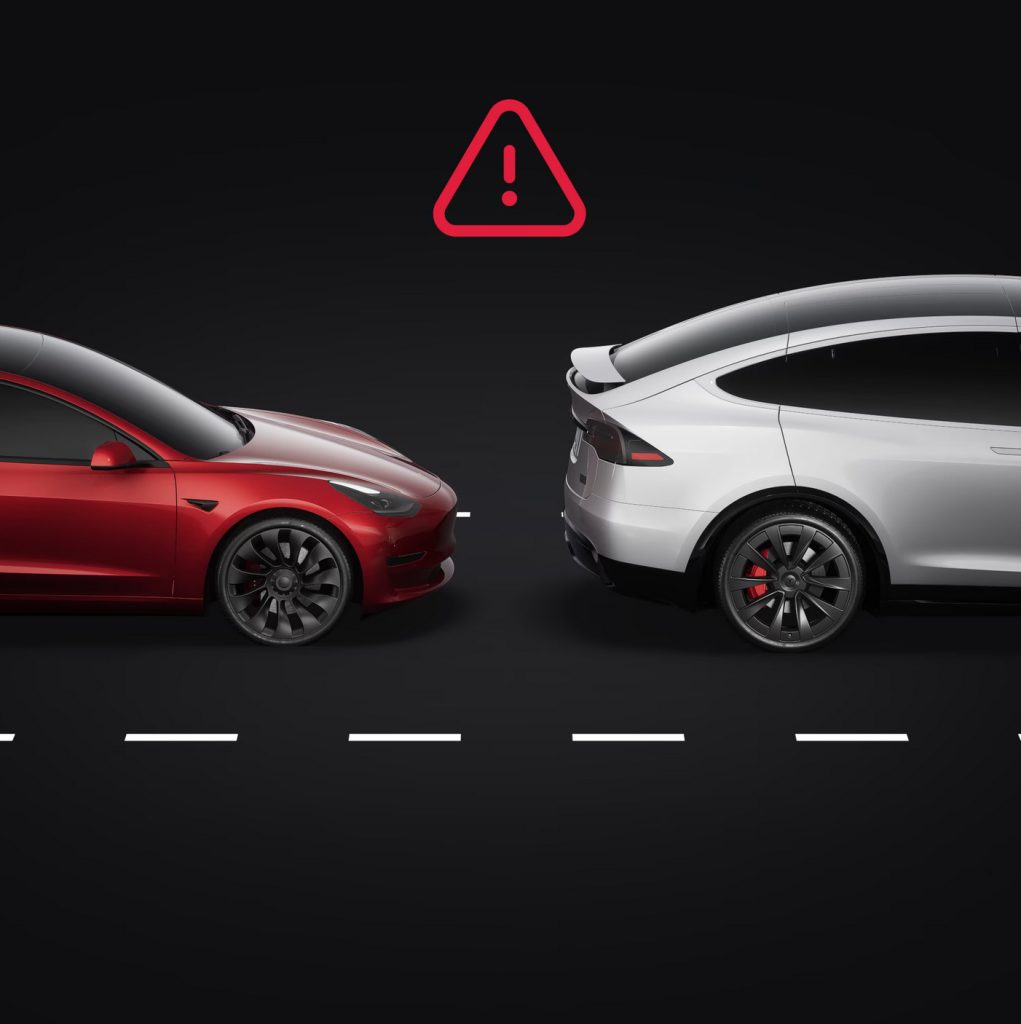
Credit: Tesla
Hard braking is defined as backward acceleration, measured by your Tesla vehicle, in excess of 0.3g. This is the same as a decrease in the vehicle’s speed larger than 6.7 mph, in one second. Hard braking is introduced into the Safety Score Beta formula as the proportion of time where the vehicle experiences backward acceleration greater than 0.3g as a percentage of the proportion of time the vehicle experiences backward acceleration greater than 0.1g (2.2 mph in one second). Hard braking while on Autopilot is not factored into the Safety Score Beta formula. For vehicles with Autopilot computer 3.0 or greater, braking while the vehicle detects yellow traffic lights is also not factored into the Safety Score Beta formula. If the vehicle is unable to detect a yellow traffic light at the time of the hard braking, the event will impact your Safety Score. The percentage shown in the app is the proportion of time spent braking done with excessive force when driving and Autopilot is not engaged. The value is capped at 5.2 percent in the Safety Score Beta formula.
Aggressive Turning
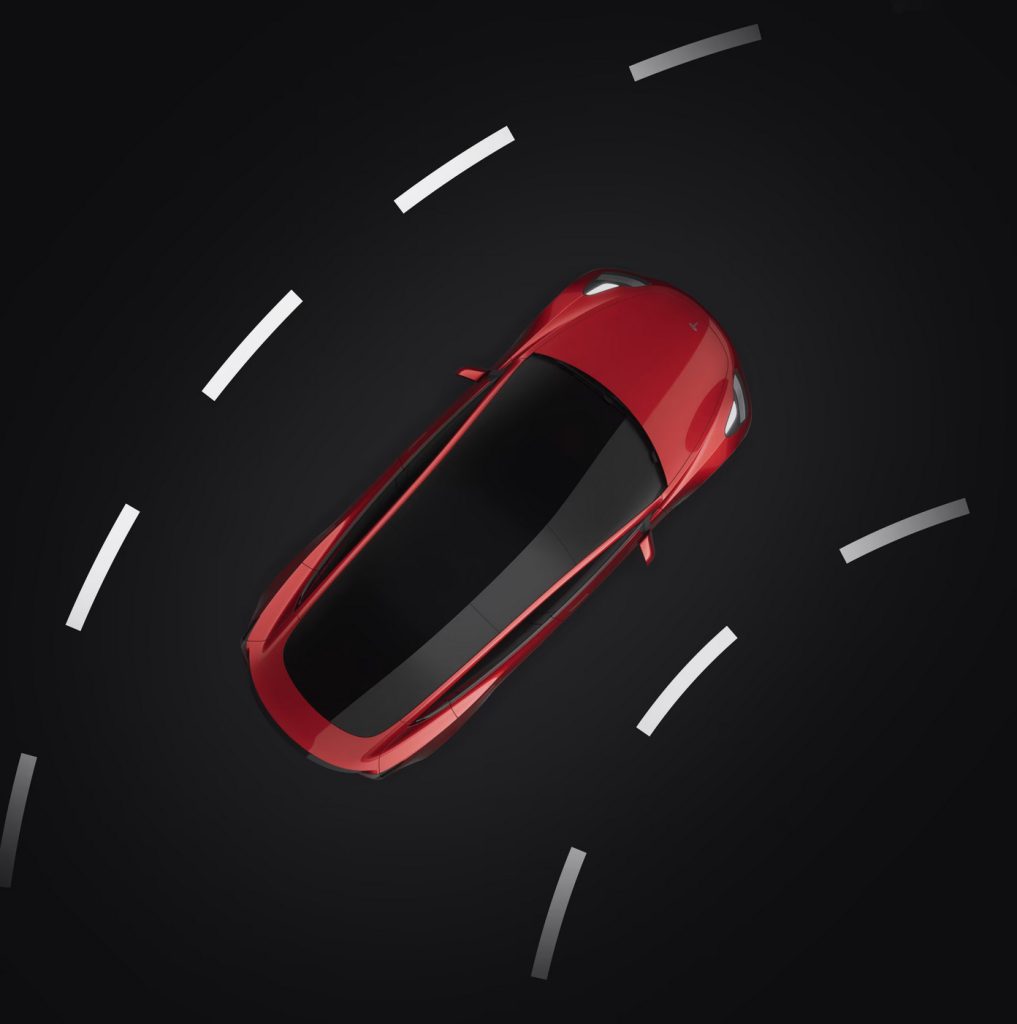
Credit: Tesla
Aggressive turning is defined as left/right acceleration, measured by your Tesla vehicle, in excess of 0.4g. This is the same as an increase in the vehicle’s speed to the left/right larger than 8.9 mph, in one second. Aggressive turning is introduced into the Safety Score Beta formula as the proportion of time the vehicle experiences left or right acceleration greater than 0.4g as a percentage of the proportion of time the vehicle experiences left or right acceleration greater than 0.2g (4.5 mph in one second). Aggressive turning while on Autopilot is not factored into the Safety Score Beta formula. The percentage shown in the Tesla app is the proportion of time spent turning with excessive force when driving and Autopilot is not engaged. The value is capped at 13.2 percent in the Safety Score Beta formula.
Unsafe Following
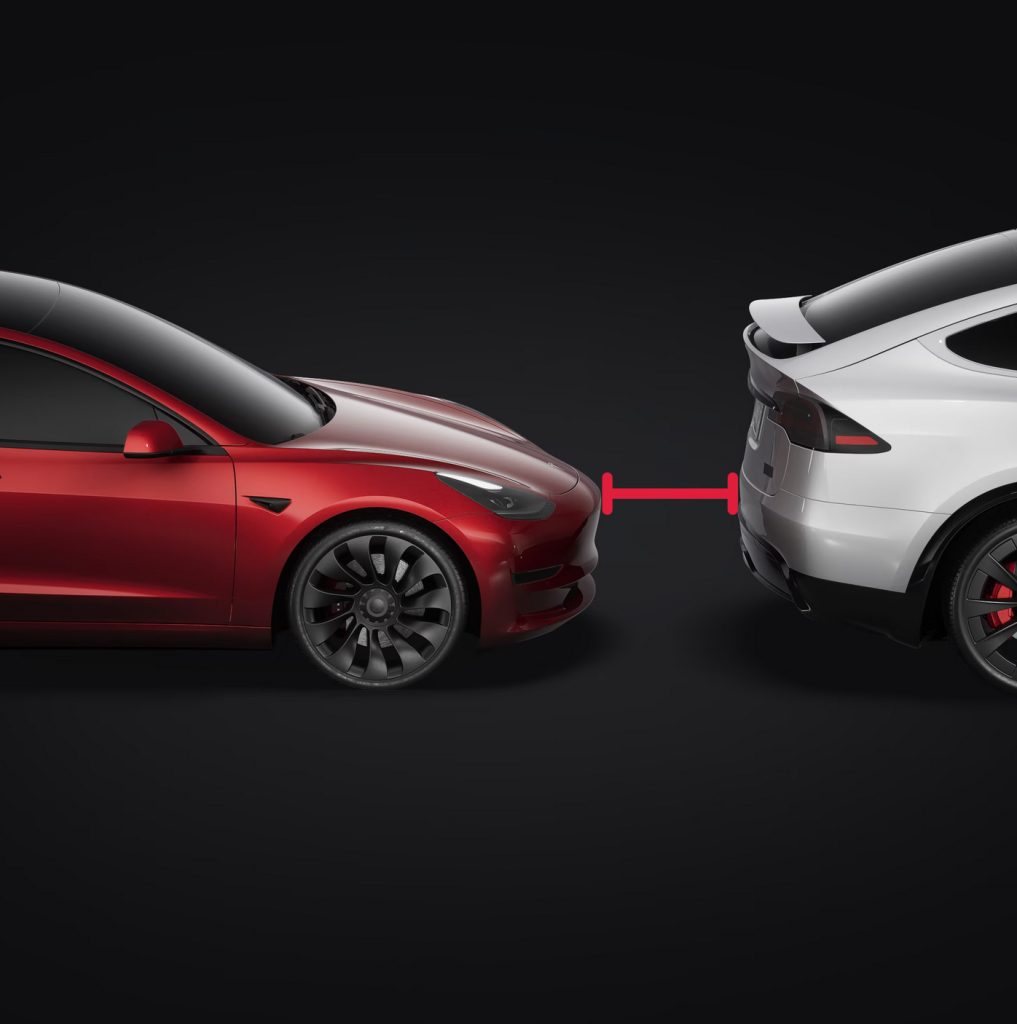
Credit: Tesla
Your Tesla vehicle measures its own speed, the speed of the vehicle in front and the distance between the two vehicles. Based on these measurements, your vehicle calculates the number of seconds you would have to react and stop if the vehicle in front of you came to a sudden stop. This measurement is called “headway.” Unsafe following is the proportion of time where your vehicle’s headway is less than 1.0 seconds relative to the time that your vehicle’s headway is less than 3.0 seconds. Unsafe following is only measured when your vehicle is traveling at least 50 mph and is incorporated into the Safety Score Beta formula as a percentage. Unsafe following while on Autopilot is not factored into the Safety Score Beta formula. The percentage shown in the Tesla app is the percentage of unsafe following when driving and Autopilot is not engaged. The value is capped at 63.2 percent in the Safety Score Beta formula.
Excessive Speeding
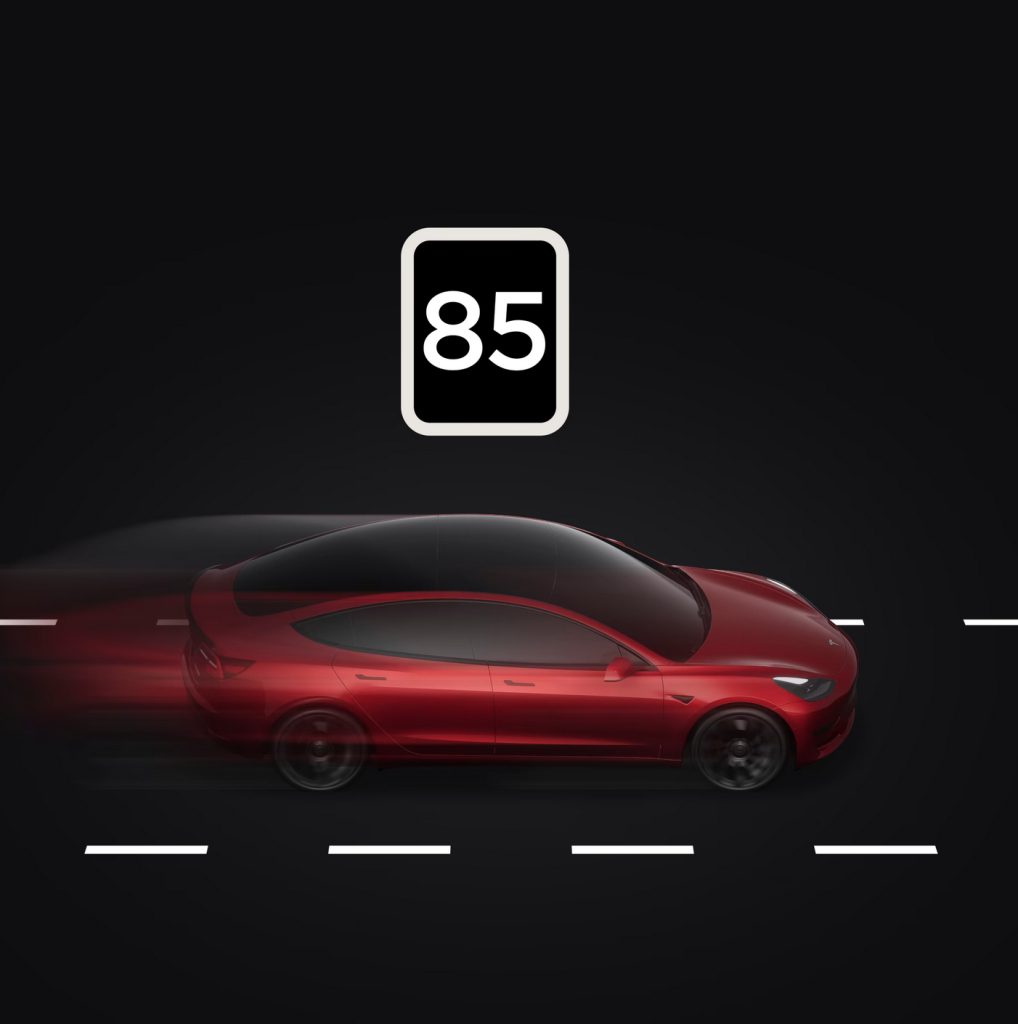
Credit: Tesla
Excessive Speeding is defined as the proportion of time spent driving in excess of 85 mph or driving 20% faster than the vehicle in front of you, when that vehicle is going over 25 mph and is within 100 meters of your vehicle. This value is expressed as a percentage of total driving time and is capped at 10.0% in the Safety Score Beta formula. Speeding while on Autopilot is not factored into the Safety Score Beta formula.
Late-Night Driving
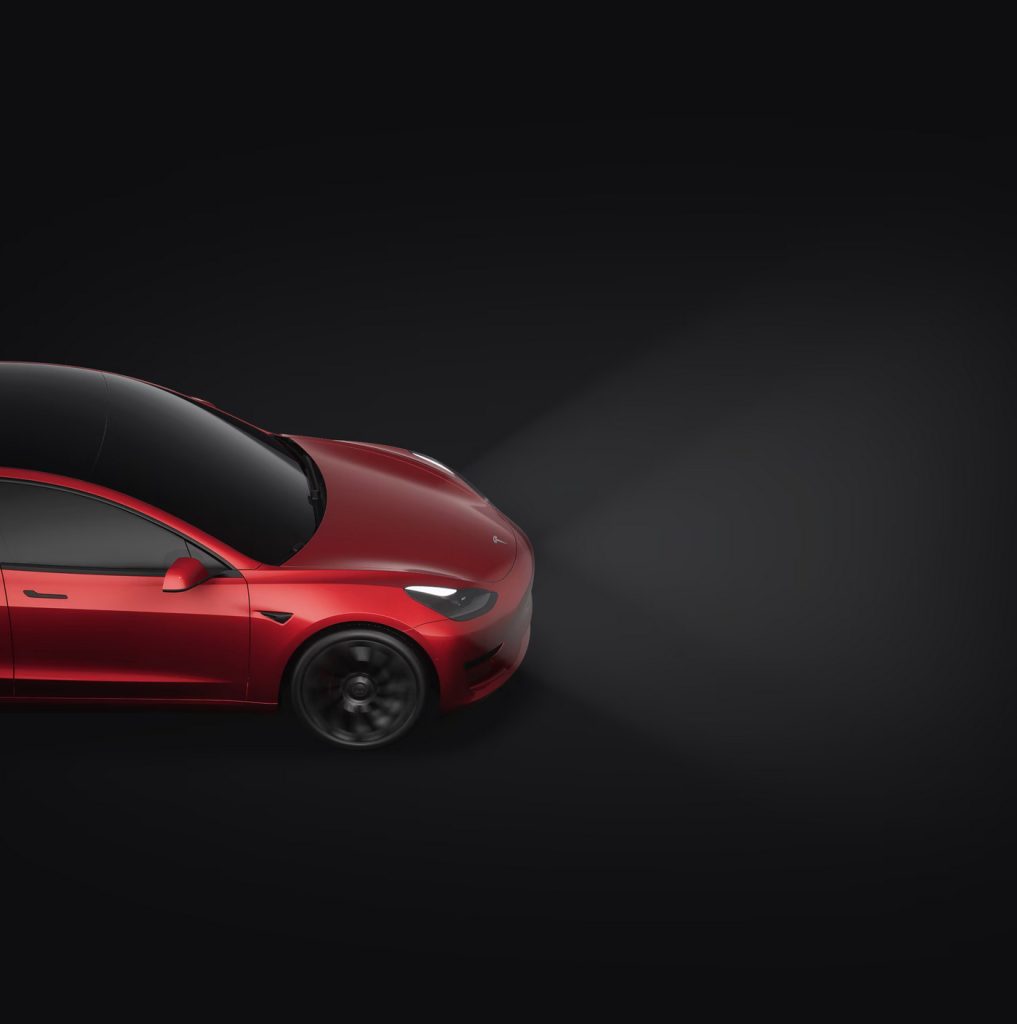
Credit: Tesla
Late-Night Driving is defined as the number of seconds you spend driving at night (11 PM – 4 AM) divided by the number of seconds you spend driving total during the day and night. Due to the variable risk level associated with driving during each late-night hour, each hour is weighed differently, and driving at each hour will affect your Safety Score differently. For example, driving at 11 PM will not affect your Safety Score as heavily as driving at 2 AM. Drive sessions that span two days will apply to the day the trip ends. Late-Night Driving includes all driving at night (11 PM – 4 AM) including any driving done on Autopilot. The value is capped at 14.2 percent in the Safety Score Beta formula.
Forced Autopilot Disengagement
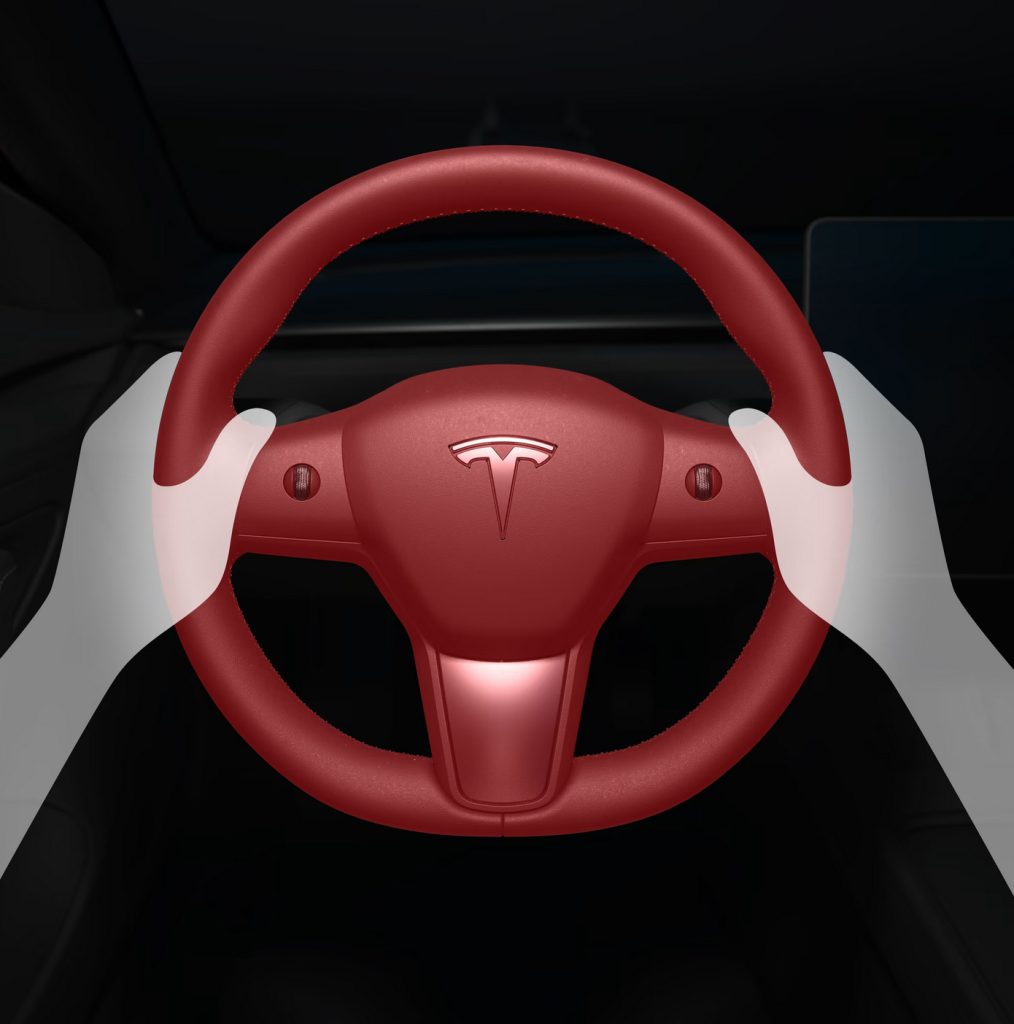
Credit: Tesla
The Autopilot system disengages for the remainder of a trip after the driver has received three audio and visual warnings. These warnings occur when your Tesla vehicle has determined that the driver has not applied sufficient resistance to the steering wheel or has become inattentive. Forced Autopilot Disengagement is introduced into the Safety Score Beta formula as a 1 or 0 indicator. The value is 1 if the Autopilot system is forcibly disengaged during a trip, and 0 otherwise.
Unbuckled Driving
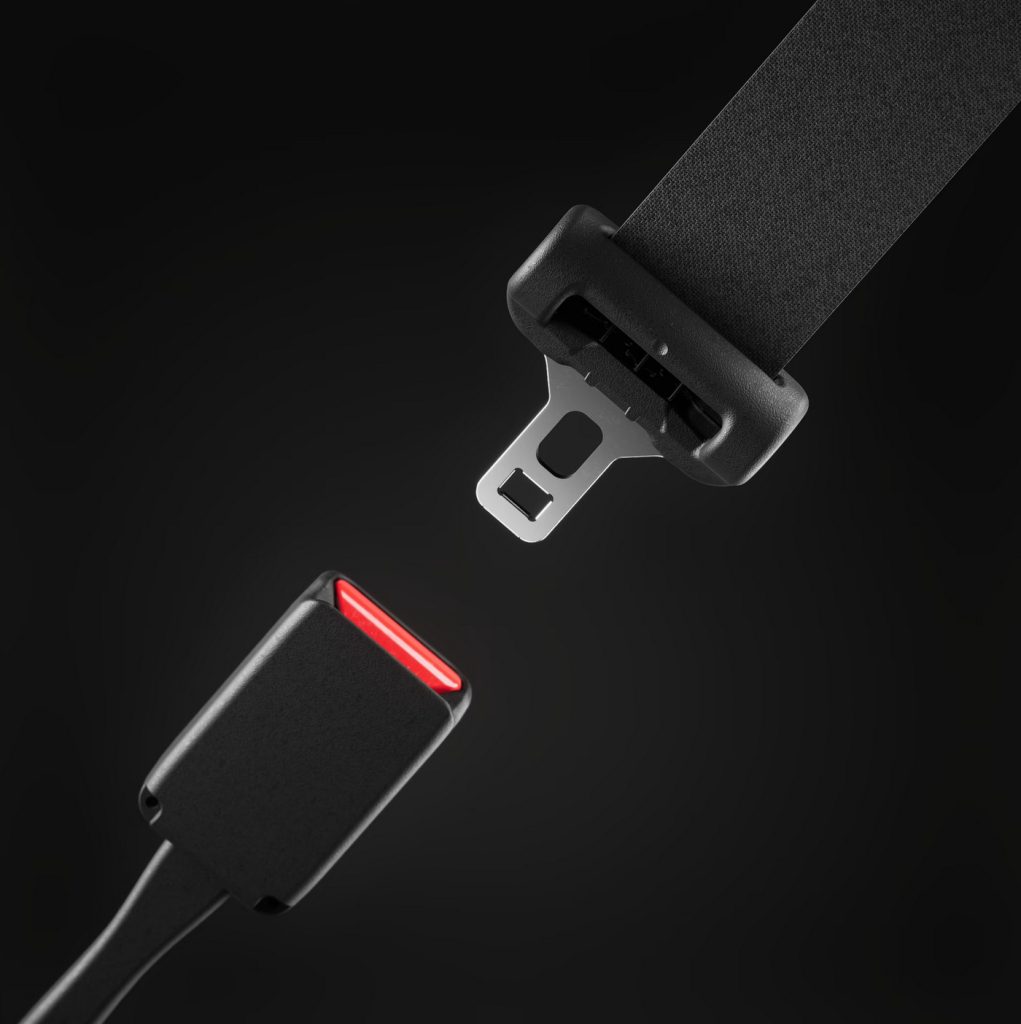
Credit: Tesla
Unbuckled Driving is defined as the proportion of time spent driving above 10 mph without fastening the driver’s seatbelt in a Tesla vehicle, as a percentage of time spent driving above 10 mph. The value shown in the Tesla app is the proportion of time driven at a speed over 10 mph, without buckling the driver’s seatbelt, as a percentage of time spent driving over 10 mph. The value is capped at 31.7 percent in the Safety Score Beta formula.
Tesla’s formula for Safety Score beta v2.2
Tesla takes the formula pictured below, dubbed its Predicted Collision Frequency (PCF), and converts it into the 0 to 100 version 2.2 Safety Score it assigns based on driver behavior. The 2.1 Safety Score formula can also be seen on the Tesla Insurance page, though the below formula is for the newly launched version 2.2.
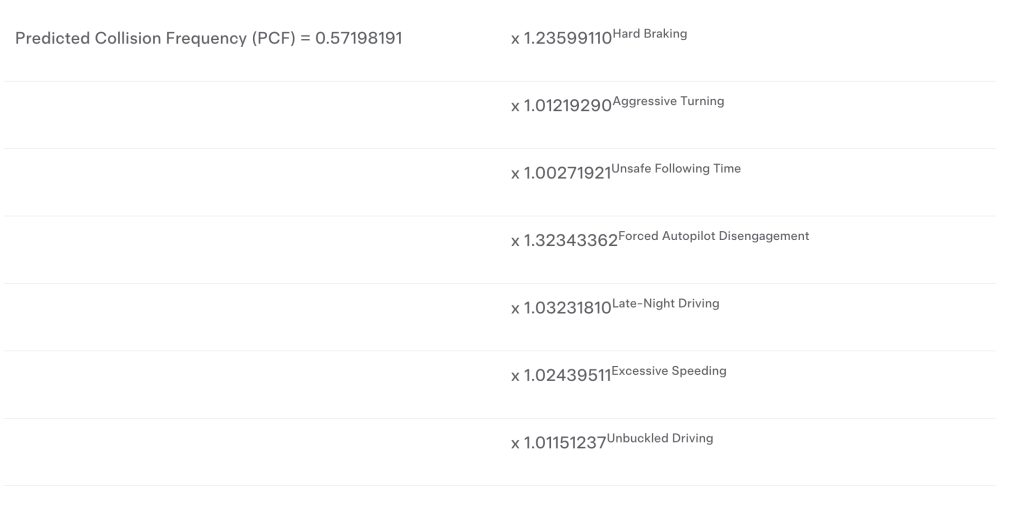
Credit: Tesla
News
These automakers are pushing to overturn California’s gas car ban
This lobbying group represents Detroit’s Big Three automakers, as well as several others selling vehicles in the U.S.
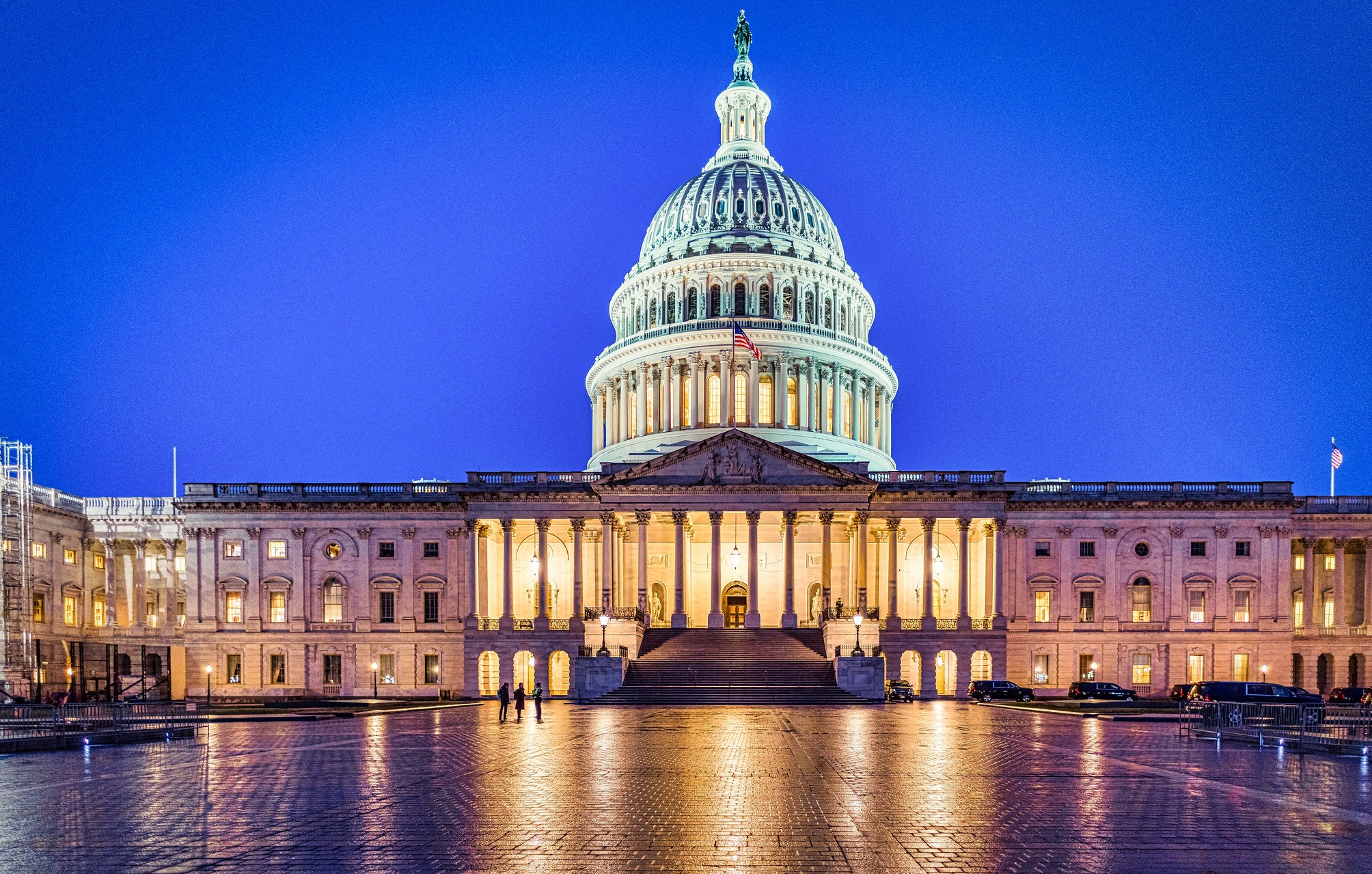
A lobbying group made up of several automakers is pushing Congress to ban California’s plan to phase out and ban new gas car sales altogether by 2035, ahead of a vote that could also affect the 11 other states that have followed with similar plans.
The Alliance for Automotive Innovation (AAI), an organization representing the interests of Ford, General Motors (GM), Stellantis, Toyota, Volkswagen, Hyundai, and several others, recently sent a letter to Congress requesting that it overturn a waiver granted to California letting it set its own emissions rules.
Later this week, the U.S. House of Representatives will vote on overturning the waiver granted to California under the 1968 Clean Air Act to impose the tightened standards, according to Reuters. In the previous letter, the AAI argued to Congress that automakers would be “forced to substantially reduce the number of overall vehicles for sale to inflate their proportion of electric vehicle sales,” adding that it would also boost prices and reduce competition in the market.
The waiver, enacted under the Biden administration’s Environmental Protection Agency (EPA), allows California to mandate at least 80 percent electric vehicle sales by 2035 under the Clean Air Act. The passage of disapproval of the waiver is being ushered under the Congressional Review Act, and an initial vote in the House of Representatives is set to take place on Wednesday.
READ MORE ON STATE EMISSIONS RULES: Tesla could face emissions credit tax in Washington
The U.S. Court of Appeals for the District of Columbia backed the EPA’s decision to grant the waiver last April, following a challenge from 17 Republican-run states. The group claimed that California was being given unconstitutional regulatory power in the decision, adding that other states didn’t have those same powers.
In December, the U.S. Supreme Court agreed to hear out bids from Valero, the AAI, and other groups to oppose the 2035 California gas car sales ban, which would begin phasing them out in 2026 if the waiver remains in place.
You can see the full list of members of the AAI below, including automakers and a handful of other tech companies.
Companies represented by the Alliance for Automotive Innovation (AAI)
Here’s the full list of AAI members, according to the lobbying group’s website:
- AESC
- AISIN
- Aptiv
- Autoliv
- BMW Group
- Bosch
- Denso
- Emergency Safety Solutions
- Ferrari
- Ford
- GM
- Harman
- Honda
- Hyundai
- InEos Automotive
- Infineon
- Isuzu
- Jaguar-Land Rover
- Kia
- LG
- Luminar
- Magna
- Mazda
- McLaren
- Mercedes-Benz
- Mitsubishi Motors
- Nissan
- Nuro
- Panasonic
- Porsche
- Qualcomm
- RV Industry Association
- Samsung
- SiriusXM
- SK On
- Stellantis
- Subaru
- Texas Instruments
- Toyota
- Uber
- VinFast
- Volkswagen
- Volvo
- Zoox
California proposal to allow self-driving tests for heavy-duty trucks
News
Neuralink’s third brain chip patient shares first video edited with BCI
The third Neuralink brain chip patient is the trial’s first patient with ALS and its first non-verbal patient, and he has detailed his experience regaining speech and more.
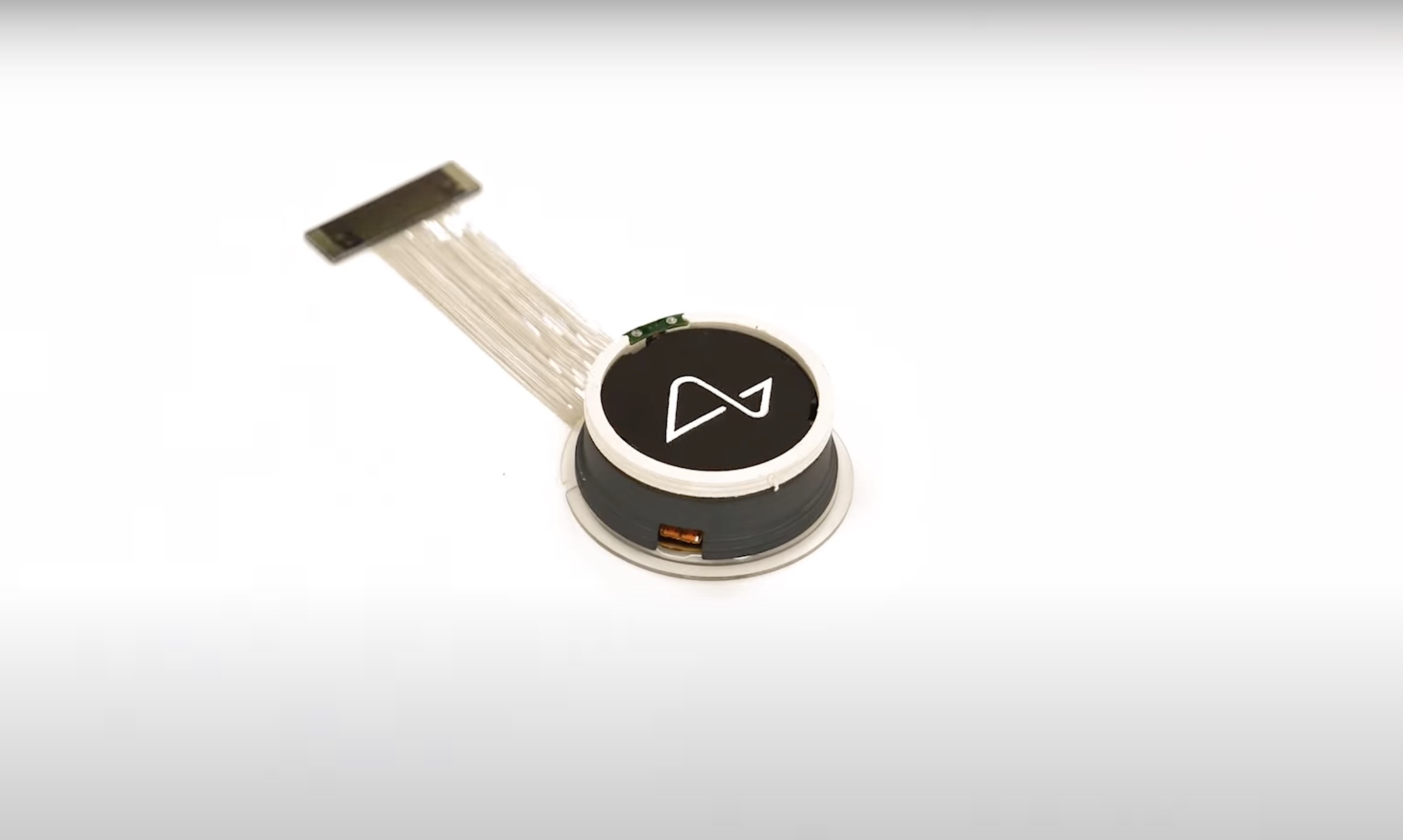
Elon Musk’s Neuralink has officially installed its brain-chip interface (BCI) into a third human patient, and the individual shared a video this week detailing his experiences gaining control of external devices and regaining the ability to talk through the use of AI.
On Monday, X user Bradford G Smith shared a video detailing his experience as the third person in the world to receive the Neuralink BCI, and as the first non-verbal patient and the first with Amyotrophic Lateral Sclerosis (ALS) to receive the implant. In the video, Smith details how the BCI works, how it’s less limiting than his previous eye tracker technology, and how it has literally helped him regain his voice through AI.
“I am typing this with my brain,” Smith wrote. “It is my primary communication.”
The video, which he says is the first edited directly with a BCI, is narrated by an AI-generated version of his old voice. Prior to the BCI, he was also unable to leave the house using his eye tracker, as it made it difficult to communicate unless he was in dark or low-light settings.
The video also shows how he’s able to connect with external devices using the BCI, with a live shots of him controlling his computer using a cursor.
You can see the full update below, which runs a little under 10 minutes.
READ MORE ON NEURALINK: Elon Musk: over 1,000 humans with Neuralink implants in 2026 is feasible
The news follows Neuralink’s initial update with Brad and other initial BCI patients, as was shared in a post on the company’s website in February. In it, Brad also explained how groundbreaking it was to be able to communicate outside and see his son win a robotics award, along with being able to consider leaving the city area for the first time in half a decade:
The most significant thing that happened this week will sound strange to you: I got to use the computer on the porch, and it worked!!
I went to [my child’s] soccer game, and the referee thought I was sleeping. I was actually able to talk outside. I [am] actually thinking about traveling outside the [city] metro [for] the first time in 5 years.
Both of Neuralink’s studies focus on restoring autonomy to people who are paraplegic through the use of external devices. The company gained initial approval from the U.S. Food and Drug Administration (FDA) to install the first BCI in a human patient in May 2023, with Noland Arbaugh being the first, a patient named Alex being the second, and Brad being the third.
Neuralink opened its Patient Registry worldwide earlier this month, allowing participants to submit to take part in the company’s initial PRIME and CONVOY studies. The firm also announced plans to operate the PRIME study out of a second location in Miami, Florida in January, after an initial location was launched in Phoenix, Arizona.
Last week, it was reported by Bloomberg that Neuralink is currently targeting a $500 million funding round at a valuation of $8.5 billion. Meanwhile, Neuralink has also been constructing office buildings near Austin, Texas, which initially aimed to be completed in May 2025.
Elon Musk
Tesla fends off new attack that will hurt consumers more than anyone else
Consumers stand to be hurt the most by a new bill that aims to take away Tesla’s Direct-to-Consumer licensing
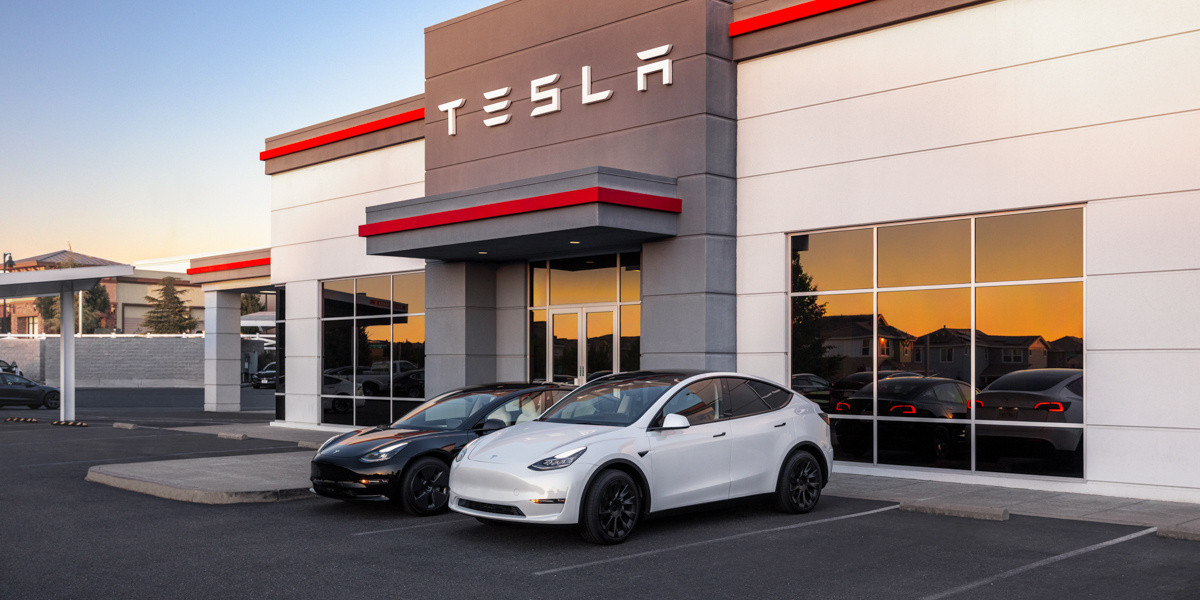
Tesla is likely going to be forced to fend off a new attack that is much different than the petty vandalism, arson, and domestic terrorism it has faced from those who oppose the company and its CEO Elon Musk. It would hurt consumers more than anyone else.
Over the past several months, we have reported numerous instances of vandalism against Tesla. No victim is too big or too small to be a potential target, as everything from keying vehicles to having Molotov cocktails thrown at showrooms is sufficient in the eyes of perpetrators.
However, the latest attack appears to be politically motivated and could hurt Tesla, its consumers, and even other automakers, and it seems to be some form of retaliation against Musk due to his affiliation with President Trump.
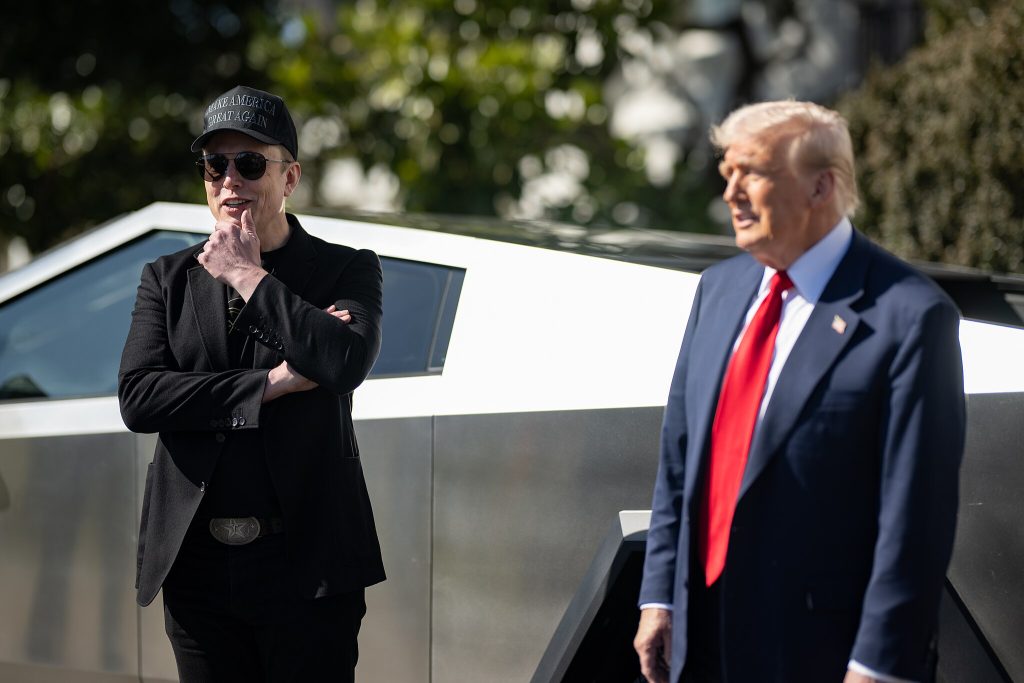
President Donald J. Trump purchases a Tesla on the South Lawn, Tuesday, March 11, 2025. (Official White House Photo by Molly Riley)
Lawmakers in New York state are now attempting to shut down Tesla showrooms in a move that would force the company to sell through dealer franchises, complicating the sales process and making the direct-to-consumer platform the company has used for years obsolete.
The New York Times reported that New York State Sen. Patricia Fahy is one of several lawmakers that is looking to hit Tesla where it hurts the most: its accessible and stress-free showrooms.
The problem is that this will hurt consumers more than Tesla.
Sen. Fahy said in March that the ease-of-sales platform Tesla uses has to be taken “from Elon Musk,” because “he’s part of an effort to go backwards.”
The licenses Tesla uses in the state allow it to sell cars directly to consumers instead of going through the traditional dealership model. These licenses, in Sen. Fahy’s perfect world, would be revoked from Tesla and given to other EV manufacturers. At one time, she was a proponent of Tesla and supported the company operating its D2C sales, stating it would cut emissions.
Now, Sen. Fahy believes Musk’s association with the Trump Administration is counterintuitive, as she says it is “killing all the grant funding for electric vehicle infrastructure, killing wind energy, killing anything that might address climate change.”
She continued by stating:
“The bottom line is, Tesla has lost their right to promote these when they’re part of an administration that wants to go backwards. Elon Musk was handed a privilege here.”
The bill is with the Senate and Assembly Finance committees.
-

 News1 week ago
News1 week agoTesla’s Hollywood Diner is finally getting close to opening
-

 Elon Musk2 weeks ago
Elon Musk2 weeks agoTesla doubles down on Robotaxi launch date, putting a big bet on its timeline
-

 News4 days ago
News4 days agoTesla is trying to make a statement with its Q2 delivery numbers
-

 News2 weeks ago
News2 weeks agoTesla’s top investor questions ahead of the Q1 2025 earnings call
-

 News2 weeks ago
News2 weeks agoUnderrated Tesla safety feature recognized by China Automotive Research Institute
-

 News2 weeks ago
News2 weeks agoTesla reveals its Q1 Supercharger voting winners, opens next round
-

 Investor's Corner7 days ago
Investor's Corner7 days agoLIVE BLOG: Tesla (TSLA) Q1 2025 Company Update and earnings call
-

 News2 weeks ago
News2 weeks agoTesla police fleet saves nearly half a million in upkeep and repair costs











